Descrizione
Painting – “Dressing the naked”
DESCRIPTION: I sell the real painting. Oil on canvas painting depicting a female figure in poverty who looks at the charitable action of a person visible only from both hands. The hidden person presumably religious or understood as Divine, wants with her cloth to cover the woman from the cold, who with a hand resting on her breast supports the rag of her dress. Italian artist: Orlando Sorgato – 02/21/1916 – 07/21/2018 see link for biography.
REGULATION: The Buyer receive the right to own the Art Work of physical painting. The Buyer can request the physical painting only after the total payment. The buyer can request certification from a notary in Trieste (Italy) and shipping to his country only after a returnable deposit of 30% excluding expenses. The expenses are: shipping, certification, insurance and transaction costs, all costs are on the responsibility of the buyer and will be budgeted before the total payment.
WARRANTY: There is no return of money to the buyer after the certification of the notary, if the buyer wants it requires the presence of his certifier appointed at the time of the notarial deed always at the expense of the buyer
NOTE: I also accept cryptocurrencies, the delivery in person is in front of a notary with the confirmation of the transaction in the wallets.
- Material: canvas
- Technique: oil on canvas
- Size: 60 x 80 cm to the canvas
- Date: year 1967
- Weight: 3 kg
- Color: as in the photo
- I received from the hands of the artist
https://opensea.io/collection/real-artwork
Orlando Sorgato was born on February 21, 1916 in Padua (Brentelle area), son of Emilio and Luigia Daniele. His father by profession was a painter-decorator (he intervened at the time, in the restoration of the church of Villatora – PD). As a war orphan and through the intercession of a priest friend of the family, he entered the Cavanis College in Possagno (TV) and completed his primary studies here, i.e. elementary and lower secondary school according to the Gentile Reform of 1923). Then he attended the Pietro Selvatico Institute in Padua (now the Lyceum of Applied Arts) and finally the Academy of Fine Arts in Venice. On 30 October 1946 he married Natalina Zaggia. The union was gladdened by the birth of 4 children: Costantino, Caterina, Antonio and Valeriano.
Arisen, endowed with an impetuous temperament, he soon distinguished himself in the religious theme managing to impress a strong spiritual value. In addition, his training made him skilled and solid in drawing, classic in setting, and he disengaged himself very well, as well as on canvas, in frescoes and mosaics.
We briefly recall his most significant works of Sacred Art:
- The monumental pictorial cycle (3 large oil canvases 5.15 × 2.40 m + 7 minor) executed in the Chapel of the Corso di Carpi (MO)
- The apsidal fresco in the church of Benevento – 80 square meters
- The triptych (mosaic and frescoes) on the facade of the church of Ceregnano (RO)
- The fresco on the ceiling of the church of Cassola (VI) – 60 square meters
- The oil altarpiece in the church of La Mandria (PD) – 3.30 × 2.90 meters
- The oil altarpiece in the church of Baricetta (RO) – 3.20 × 2.20 meters
- The two wall mosaics in the church of Sant’Alberto Magno (PD) – 90 square meters
- The fresco in the church of San Prosdocimo (PD) – 3.30 × 2.90 meters
- The parietal encaustic in the church of Vas (BL) – 87 square meters
- The fresco in the church of Crosara San Luca (VI) – 15 square meters
- The two oil altarpieces in the church of Lozzo Atestino (VI) – 31.50 square meters
- The symbolic stained glass windows and mosaic in the church of Murelle (PD)
- The stained glass windows in the church of Bergantino (RO)
- The oil on panel polyptych in the church of Altichiero (PD)
- The oil altarpiece in the church of San Tomaso (PD)
- The mosaic on the triumphal arch in Candela (FG) – 2.10 × 1.60 meters
- The apse mosaic in the church of Deserto d’Este (PD) – 90 square meters
- The apse mosaic in the church of Chiuppano (VI) – 220 square meters
- The apse mosaic in the church of Creola (PD) – 130 square meters
- The stained glass windows in the church of Pozzonovo (PD).
A delicate close-up of the artist already advanced in years:
He also successfully engaged in secular art and portraiture, and from 1934 he began to participate in numerous national and international group exhibitions, obtaining prizes and various awards, of which we cite the latest received at the New Pompeii Centenary Art Conference.
Here are some participations:
- 1934 – National Art Exhibition – Padua
- 1944 – Room of the mutilated of war – Martina Franca (TA)
- 1948 – International Art Exhibition of the Temple – Padua
- 1964 – IXth Picture Fair – San Vidal Gallery – Venice
- 1965 – UCAI illustration competition – Padua
- 1966 – “Al Club del Corso” Gallery Carpi – Modena
- 1967 – 1st National Biennial of impromptu painting Chioggia Sottomarina – Venice
- 1968 – “La Palette Bleue” Galleries – Paris
- 1969 – National painting exhibition Valeggio sul Mincio – Verona
- 1970 – Umjetnicka Galerija – Dubrovnik
- 1971 – Biennial of Contemporary Art “M. Pettenon ”San Martino di L. – Padua
- 1972 – Triveneta San Martino di Lupari Exhibition – Padua
- 1974 – Exhibition of the Painters and Sculptors Association of Padua
the artist at work in the Belluno area:
In landscapes, as in human figures and flowers, Sorgato identified himself precisely in the richness of warm and restful tones, of a color that flows spontaneously and confidently from a broad and full-bodied brushstroke, where the artist’s concern to offer a simple and linear language, without frills or too elaborate techniques.
And even when the painter sometimes abandoned the figurative to give vent to impromptu moments of escape, resorting to symbolism, he did not use an abstruse language, but tried to explain certain moods, certain inner dramas of human vicissitudes, making speak the color, with all its shades.
The technique in Sorgato’s works can vary, you can see different ways of dealing with a topic, but of the language of color, the imprint is always the same: a completely personal way, in short, to translate the multiple inspirations through a true harmony of colors. ranging from the paler tones of a country landscape full of restful stillness, to the brighter and more violent tones of a red sunset between clouds of fire.
He was an associate academic of the “Tiberina” Academy, an institute of university culture and higher education; of the Union of the “Golden Legion”, and also academic of merit of the Academy of “I 500”.
Numerous critics have been interested in his art, including: Salvatore Maugeri, Corrado Gamberoni, Nino Scalisi, Umberto Borghi, Mario Gorini, Corrado Vellani, Gerardo Cossio, Ettore Spaggiari and others.
Orlando Sorgato left us on 21 July 2018 in Padua (Altichiero).
NB. I thank the son Valeriano who provided me with the material for this work.
The two altars dedicated to the Madonna of the Rosary and to Saint Joseph are embellished with mosaics by Orlando Sorgato made in 1963 and 1965, which depict the Madonna of the Rosary with Saint Dominic and Saint Albert and Saint Joseph and Saint Teresa of Lisieux. Church of S. Alberto Magno in Padua.
The modern parish church of Altichiero houses some works of art that originally adorned the ancient church of Sant’Eufemia, flanked by the valuable twentieth-century works by Orlando Sorgato. The modern parish church of Altichiero houses some works of art that originally adorned the ancient church of Sant’Eufemia. Among these, the 14 wooden roundels, lacquered and gilded, painted with the episodes of the Via Crucis, hanging on the right wall of the nave. They are traced back to artists of Venetian origin and dated around the first half of the 19th century. Instead, Orlando Sorgato’s signature is a stained glass window in colored paste, fired and tied with lead depicting Saint Justina made at the end of the last century and a tempera triptych on wood from 1968 with, in the center, the Madonna with baby Jesus between two angels, while in the predella there are the Annunciation, the Nativity and the Crucifixion.

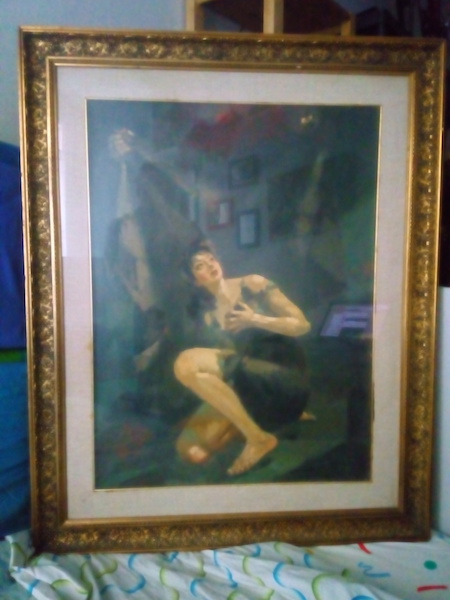
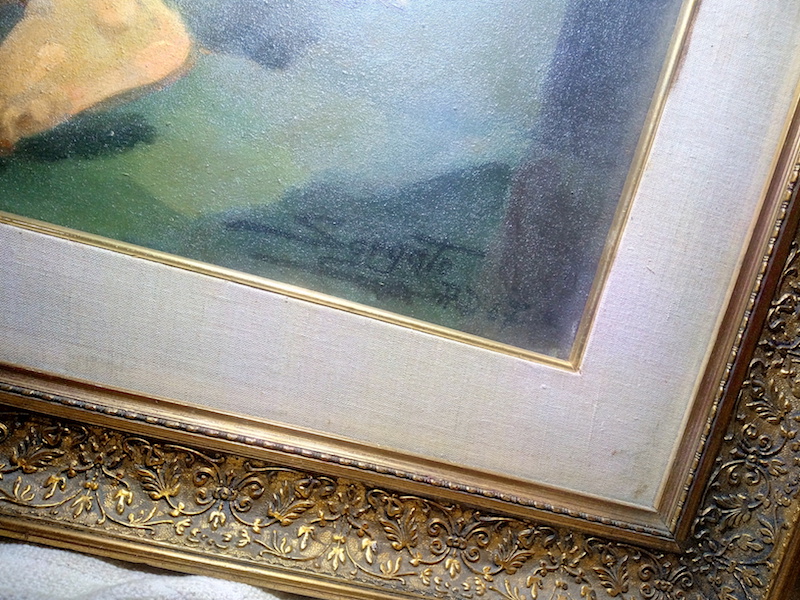
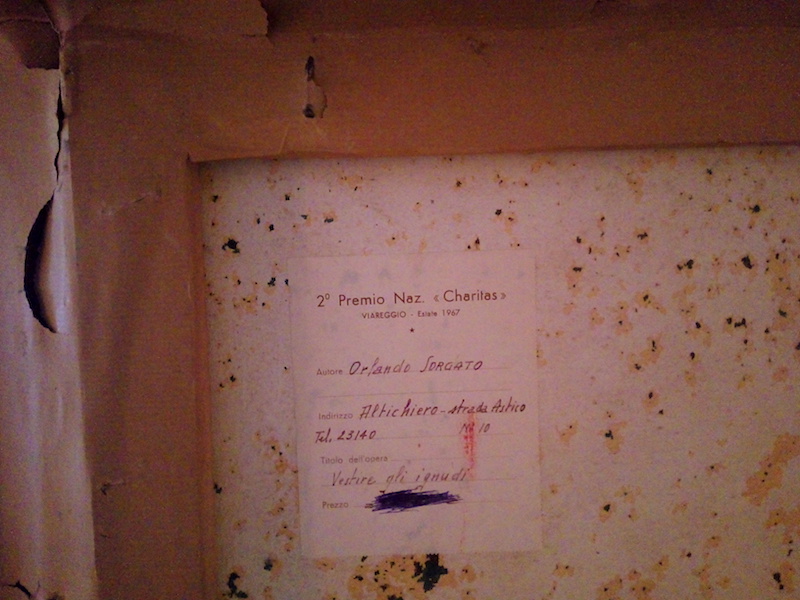
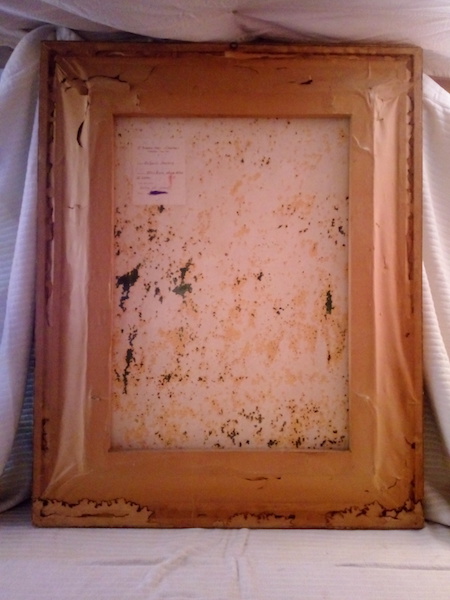
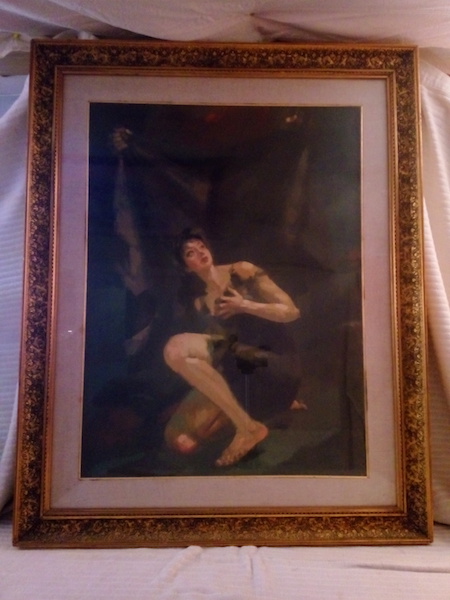
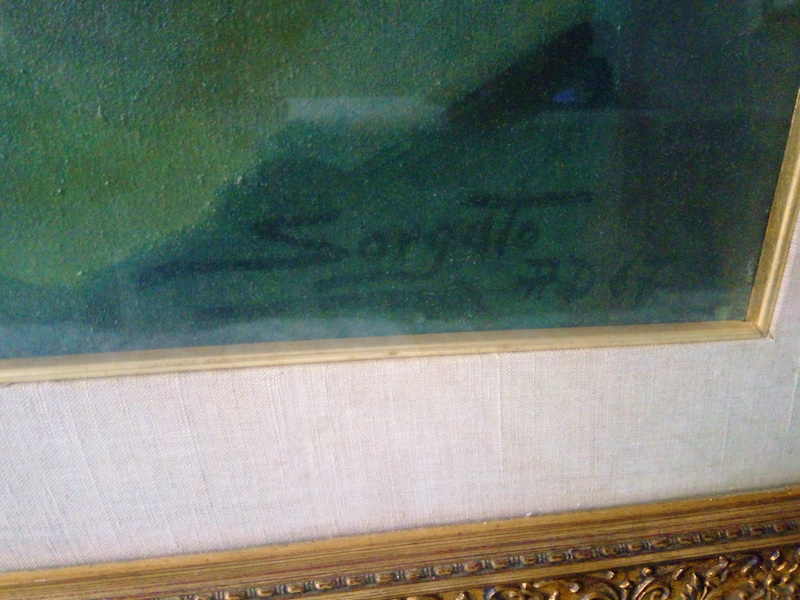
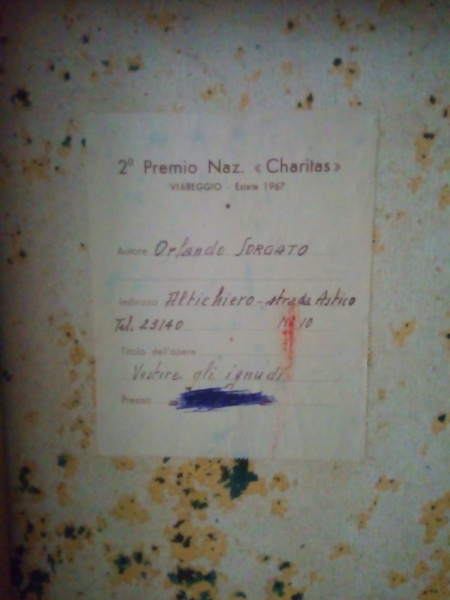
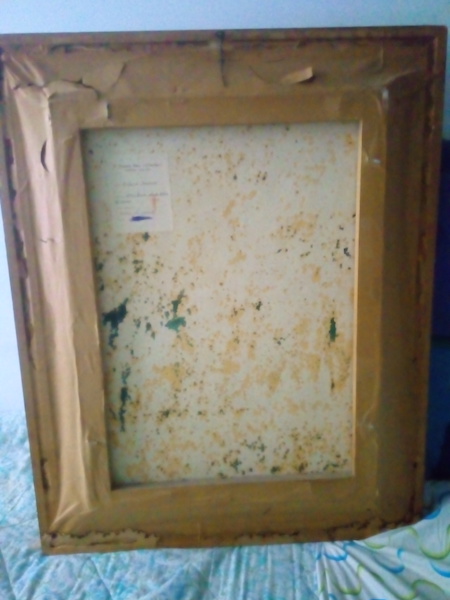
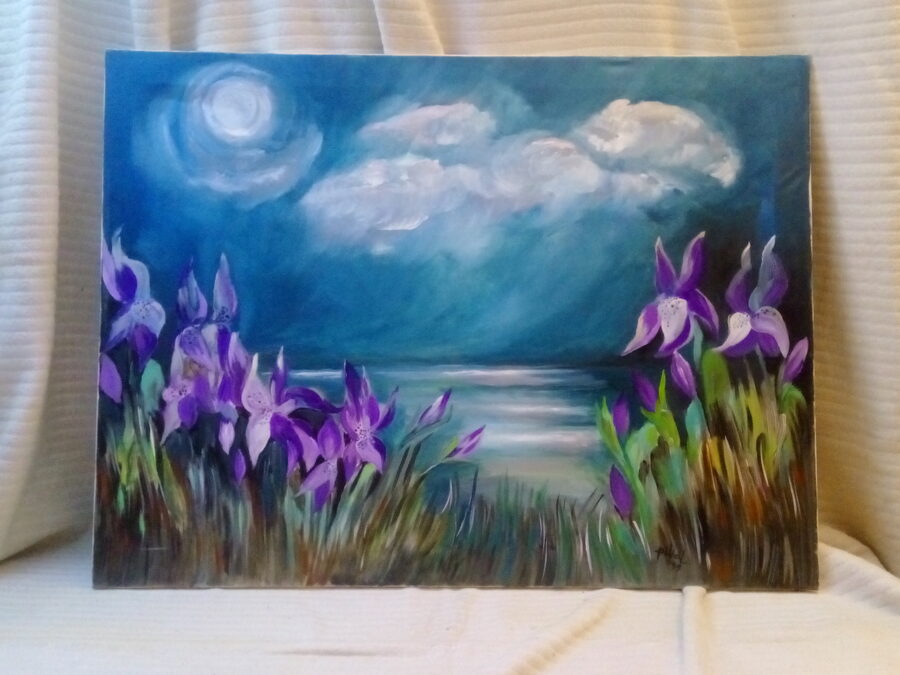
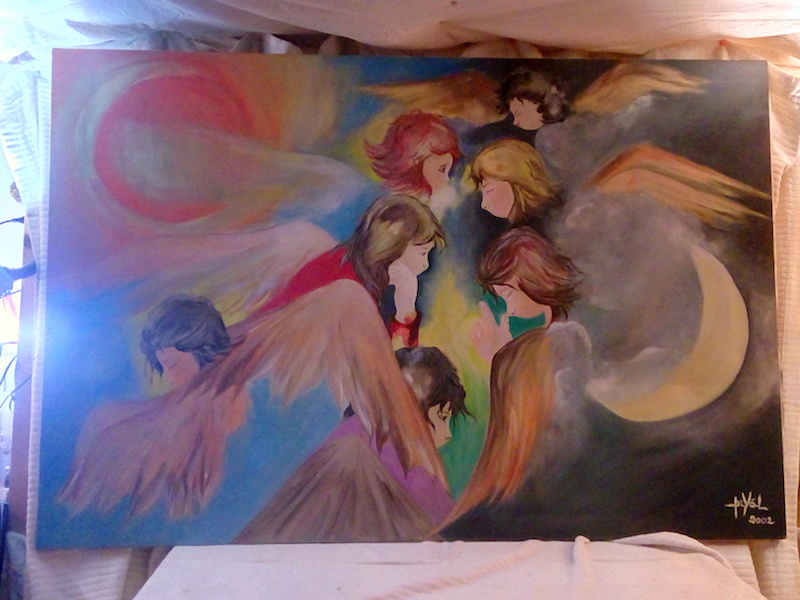
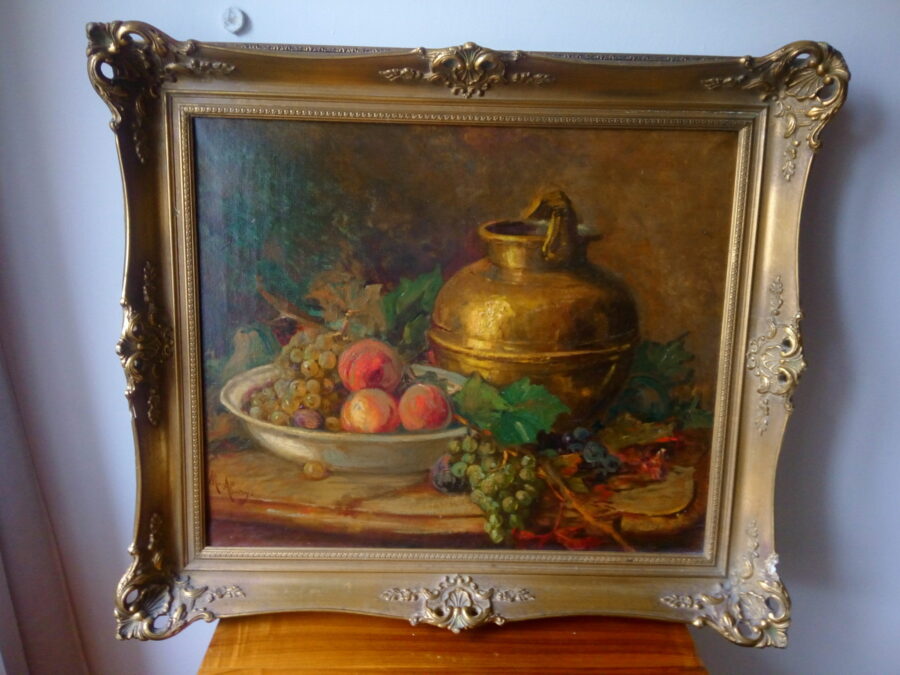
Recensioni
Ancora non ci sono recensioni.